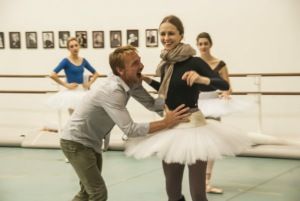Things to do
Ballet Review: Sass, class, and an evocative mass
This article is more than 8 years old.
★★★★★

Ballet supremo Nikolaj Hübbe is justifiably happy (photo: KGL)
The Royal Danish Ballet’s ‘Dans2Go’ production is a splendid mash-up of a 1920s storybook sass, a neoclassical debut re-emerged, and a contemporary trial that defies the elements through pulsing synchronisation and stimulating effects.
Hailing from the lost generation
For the opening piece ‘Weimar’, artistic director and choreographer Nikolaj Hübbe draws from an old-fashioned script inspired by the likes of writers such as F Scott Fitzgerald.
Dancers twirled about in harmonising fashion to old French and German lyrics while blouses and skirts flew alongside corduroy and suspenders during jeté arabesques and leaps and lifts filled with attitude.
A whole range of sentiments was illustrated: from an entangled love affair between a girl and her sailor man to a rebellious ‘Jenny’ who dons a riské red flapper dress.
All in all, ‘Weimar’ elicited a light-hearted fondness for the past.
Magic of the classics
Ida Praetorius and Andreas Kaas were immaculately cast together to perform George Balanchine’s ‘Tchaikovsky Pas de deux’ from 1960.
Kaas spell-bound the audience with his suspended height, prodigious lines and strength before drifting into excellent chemistry with Praetorius’s graceful arms and polished pekés.
Fighting forces
‘Vertical Road’ evoked the senses. The piece is a sparring symbolic interpretation between human and element. Raw, fierce and extraordinarily captivating, Akram Khan is the prototype of ingenious contemporary dance.
Liam Redhead starred as The Traveller while Alba Nadal and Tobias Praetorius featured as gang leaders of the pack. Thrashing across the floor was mirrored by exacting thrusts from the group’s triangular formation, pronouncing a power struggle against Redhead’s character.
Bodies were cloaked in gauntly robes and the daunting atmosphere was amplified by special lighting to shape shadows, silhouetted hands and receding bodies. The journey transcended the stage, leaving a state of deep impression in the audience.











































